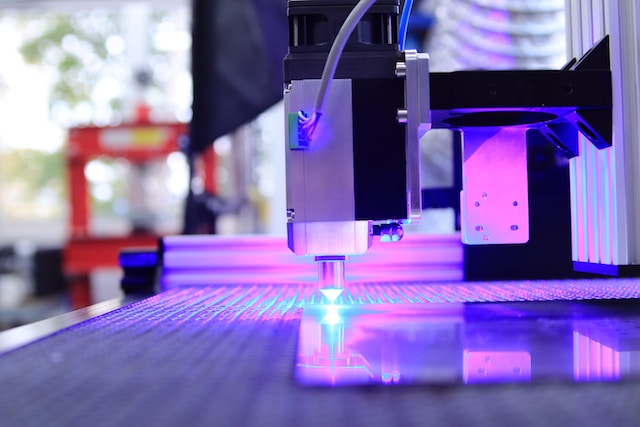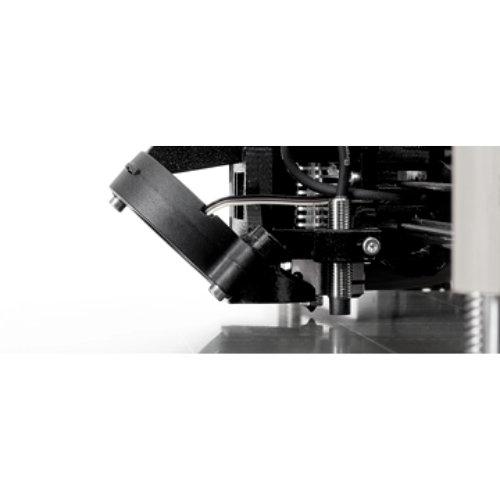3D printing is often mentioned as an alternative to injection molding? In this post we take a deeper look at differences between these two technologies. Learn whether 3D printing or injection molding is more cost-effective for your project and find out how to make the best decision for your business.

Technical Comparison
Here’s a comparison table for 3D printing and injection molding. Please note that these are generalized statements and specific cases may vary based on numerous factors.
| Criteria | 3D Printing | Injection Molding |
|---|---|---|
| Cost | Lower cost for small production runs. | Higher initial costs but lower for mass production. |
| Speed | Good for rapid prototyping, but slower for mass production. | Faster for mass production after the initial mold is created. |
| Complexity | Can create highly complex and customized shapes. | Limited by the complexity of the mold. |
| Materials | A wide range of plastics, metals, ceramics, and resins. | Mostly thermoplastics, thermosetting polymers, and elastomers. |
| Surface Finish | Generally, rougher surface finish, post-processing may be needed. | Smooth finishes with a high degree of repeatability. |
| Waste | Minimal waste as only required material is used. | More waste due to excess material from the molding process. |
| Tooling | No tooling cost as no mold is required. | High tooling cost due to mold production. |
| Volume | More suitable for low to medium volume production. | Ideal for high-volume production. |
| Design changes | Easy to make design changes at no additional cost. | Design changes require a new mold, increasing cost. |
| Durability | Durability depends on the material used, can be less consistent. | More consistent and typically higher durability. |
Cost Comparison
Injection molding is most cost-effective for large-scale manufacturing where the initial setup cost can be spread over many units, and the design is unlikely to change. 3D printing is more cost-effective for small-scale production, custom items, or situations where the design may need to be tweaked frequently.
| Injection Molding | 3D Printing | |
|---|---|---|
| Setup Cost | High (due to mold creation) | Low (no molds required) |
| Production Run Cost | Low per unit (economies of scale) | Higher per unit |
| Material Cost | Low to Medium | Medium to High |
| Design Changes Cost | High (new mold required) | Low (digital model changes) |
| Maintenance Cost | Medium | Low to Medium |
| Waste Management Cost | Medium (depends on part complexity and sprue management) | Low (minimal waste) |
| Time to Market | Longer (due to mold creation) | Shorter |
| Labor Cost | High (machines need operators) | Low (less operator-intensive) |
| Energy Cost | High (heating and cooling cycles) | Lower |
| Training Cost | High (specialized training required) | Lower (user-friendly) |
Ultimately, the most cost-effective manufacturing method will depend on the specific needs of your application. It may be helpful to compare quotes from different manufacturing processes to determine the best option for your project.
Injection Molding
Good examples
- Mass Production: if you need to produce hundreds of thousands or millions of identical products, injection molding can be cost-effective due to the economies of scale.
- High Precision Requirements: injection molding can produce parts with very tight tolerances, so it’s useful for precision parts such as mechanical gears.
- Long Product Life: if you’re producing a product that isn’t likely to change much over time, the high initial setup cost of injection molding can be amortized over many years.
Bad examples
- Prototyping: injection molding isn’t usually cost-effective for producing a small number of prototypes because of the high initial mold cost.
- Customization: if every product needs to be different or if there are frequent design changes, injection molding can be costly because a new mold has to be made for each design.
- Small Production Runs: for producing a small number of items, the per-unit cost can be quite high due to the initial setup costs.
3D Printing
Good examples
- Prototyping: 3D printing is excellent for making prototypes quickly and affordably. Design changes can be implemented digitally and printed out almost immediately.
- Customized Products: 3D printing excels at making one-off or small runs of customized products, like custom jewelry, dental implants, or prosthetics.
- Complex Designs: if the product has complex geometries that would be difficult or impossible to make with traditional manufacturing methods, 3D printing can be a good choice.
Bad examples
- Mass Production: 3D printing is usually more expensive per unit than traditional manufacturing methods for large-scale production.
- Large Parts: 3D printers have size limitations. For large parts, traditional manufacturing methods like injection molding or CNC machining can be more efficient.
- Materials Limitation: while 3D printing materials have come a long way, they are still not as diverse or as robust as those available for injection molding. If the product needs to withstand harsh environments or heavy use, injection molding may be a better choice.
Major cost factors deep-dive
There are several factors that can affect the cost of 3D printing and injection molding, including:
Material
The cost of the material being used can impact the overall cost of production. Some materials are more expensive to 3D print with than to injection mold, and vice versa.
The cost of the material being used can impact the overall cost of production for both 3D printing and injection molding. For example, metal materials tend to be more expensive to 3D print with than plastic materials, while plastic materials may be more expensive to injection mold with than metal materials. The specific material being used can also affect the strength and durability of the final part.
Size and complexity of the part
The size and complexity of the part being produced can affect the cost of both 3D printing and injection molding. In general, larger and more complex parts may be more expensive to produce.
The size and complexity of the part being produced can affect the cost of both 3D printing and injection molding. For example, a larger and more complex part may require more material and more time to produce, which can increase the overall cost. On the other hand, a smaller and simpler part may be less expensive to produce.
Number of parts being produced
The cost per unit decreases as the number of parts increases in injection molding, while the cost per unit for 3D printing tends to remain relatively constant regardless of the quantity being produced.
The number of parts being produced can affect the cost of both 3D printing and injection molding. In general, the cost per unit decreases as the number of parts increases in injection molding, while the cost per unit for 3D printing tends to remain relatively constant regardless of the quantity being produced. For example, if you need to produce 1000 parts, it may be more cost-effective to use injection molding because the cost per unit will be lower than if you were to 3D print the same number of parts. However, if you only need to produce a small number of custom parts, 3D printing may be more cost-effective because the cost per unit will not decrease as the quantity increases.
Lead time
The required lead time for production can also affect the cost. 3D printing may be more cost-effective for producing custom parts on demand, while injection molding may be more cost-effective for producing large quantities of parts with a longer lead time.
The required lead time for production can also affect the cost of 3D printing and injection molding. If you need parts produced quickly, 3D printing may be more cost-effective because it can produce parts on demand without the need for a mold. In contrast, injection molding may be more cost-effective for producing large quantities of parts with a longer lead time because the cost per unit decreases as the quantity increases.
Set-up costs
Injection molding typically has a higher upfront cost due to the cost of creating the mold. 3D printing, on the other hand, does not require a mold and may have lower setup costs.
Injection molding typically has a higher upfront cost due to the cost of creating the mold. The cost of creating a mold can vary depending on the size and complexity of the part, but it can be several thousand dollars or more. In contrast, 3D printing does not require a mold and may have lower setup costs.
Post-processing
Some 3D printed parts may require additional post-processing, such as sanding or painting, which can add to the overall cost of production. Injection molded parts may also require post-processing, but this may be less common.
Some 3D printed parts may require additional post-processing, such as sanding or painting, which can add to the overall cost of production. This may be necessary to achieve the desired surface finish or to add color to the part. Injection molded parts may also require post-processing, but this may be less common. For example, if you need to paint a plastic part, it may be more cost-effective to injection mold the part rather than 3D print it and then paint it.
Machine and maintenance costs
The cost of the 3D printing or injection molding machine and any required maintenance can also affect the overall cost of production.
The cost of the 3D printing or injection molding machine and any required maintenance can also affect the overall cost of production. 3D printing machines can range in price from several hundred dollars for a basic desktop printer to several hundred thousand dollars for a professional-grade industrial printer. Injection molding machines can also vary in price, but they tend to be more expensive than 3D printing machines. Additionally, both 3D printing and injection molding machines may require regular maintenance to keep them running smoothly, which can add to the overall cost of production.
For example, if you are considering purchasing a 3D printing machine for your business, you will need to consider the upfront cost of the machine, as well as the ongoing maintenance and operational costs. Similarly, if you are using a third-party manufacturing service, you will need to consider the cost of using their equipment and any maintenance fees that may be charged.
It may be helpful to consider all of these factors when comparing the cost of 3D printing and injection molding for a specific project.
